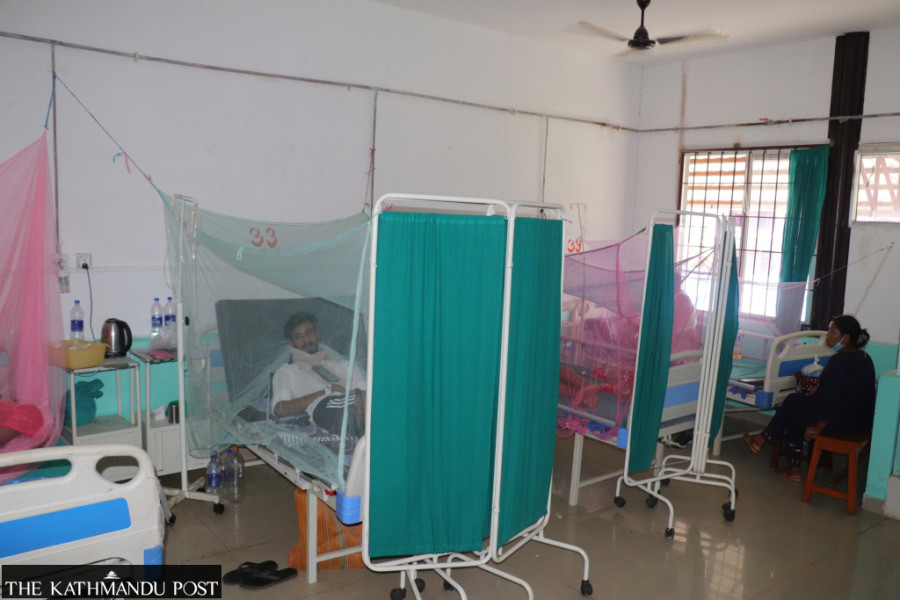Health
Dengue spread has slowed, not stopped
Experts say separate mechanism is needed to deal with emerging vector-borne diseases.
Arjun Poudel
Although cases of dengue have declined significantly amid dipping temperatures, entomologists warn that dengue spread has gone down naturally but the risks are still there. They say that a new surge could start once the temperature rises, as nothing has been done to destroy the eggs of infected mosquitoes.
“Dengue cases have come down just because of falling temperatures. There is no role of the authorities,” Professor Murari Das, an entomologist at the BP Koirala Institute of Health Sciences, said. “Cases could surge again when the temperatures start to rise.”
Dengue is a mosquito-borne disease transmitted by female Aedes aegypti and Aedes albopictus mosquitoes. The same vector also transmits chikungunya, yellow fever, and Zika, according to the World Health Organisation.
Post-monsoon is considered a high transmission season for dengue, but Nepal has witnessed outbreaks of the deadly disease since the start of the year and in the pre-monsoon and monsoon seasons as well.
At least 54 people died and over 46,700 were infected with the dengue virus this year—a single-year record. Experts say reported cases of dengue could be just the tip of the iceberg, as around 90 percent of the dengue-infected people do not show any symptoms.
Many people infected with dengue have not been seeking hospital care, which is also the reason for the decline in reported cases, doctors say.
Those closely tracking the cases suspect many more people could have succumbed to the disease as not all deaths are reported, like in Covid. Officials at the Health Ministry also concede it.
Despite the deaths of dozens of people and thousands getting infected, no proper measures have been taken to contain the spread of the virus.
A few weeks ago, Das and other entomologists were deployed in Lalitpur, Kathmandu, and Dang districts for surveillance of dengue vectors. According to him, nothing has been done to prevent the spread of the virus even as dozens of people have lost their lives and thousands of others have been infected.
“We found the larvae of dengue-spreading mosquitoes in almost every house,” said Das. “There were larvae in flower pots, vases, and other containers, but people were not aware of them.”
The Epidemiology and Disease Control Division said that Aedes aegypti and Aedes albopictus mosquitoes are responsible for this year’s spread of the dengue virus, and serotypes 1 and 3 of the dengue virus were found responsible for the disease.
Experts say infection of new serotypes other than 1, and 3 could make the problems more severe.
Nepal has witnessed a dengue epidemic every two or three years.
In 2019, too, at least six people died and over 17,000 were infected by the deadly virus, which had spread to 68 of the 77 districts. This year cases of infection have been reported from all districts across the country.
Every year, thousands of people get infected by dengue and other vector-borne diseases—kala-azar, malaria, scrub typhus, Japanese encephalitis, and others. And what concerns experts is these diseases have been reported from the districts like Mugu, Humla, Jajarkot, Jumla, and Salyan, which are considered colder places and non-endemic.
“Existing government mechanisms may have been doing a lot to contain the spread of the diseases caused by vectors,” said Dr Sher Bahadur Pun, chief of the Clinical Research Unit at Sukraraj Tropical and Infectious Disease Hospital. “But a separate mechanism or body for vector-borne diseases would handle the problems more effectively.”
Currently, a section under the Epidemiology and Disease Control Division works on policy-making, surveillance, and containment of the spread of diseases.




 15.12°C Kathmandu
15.12°C Kathmandu














